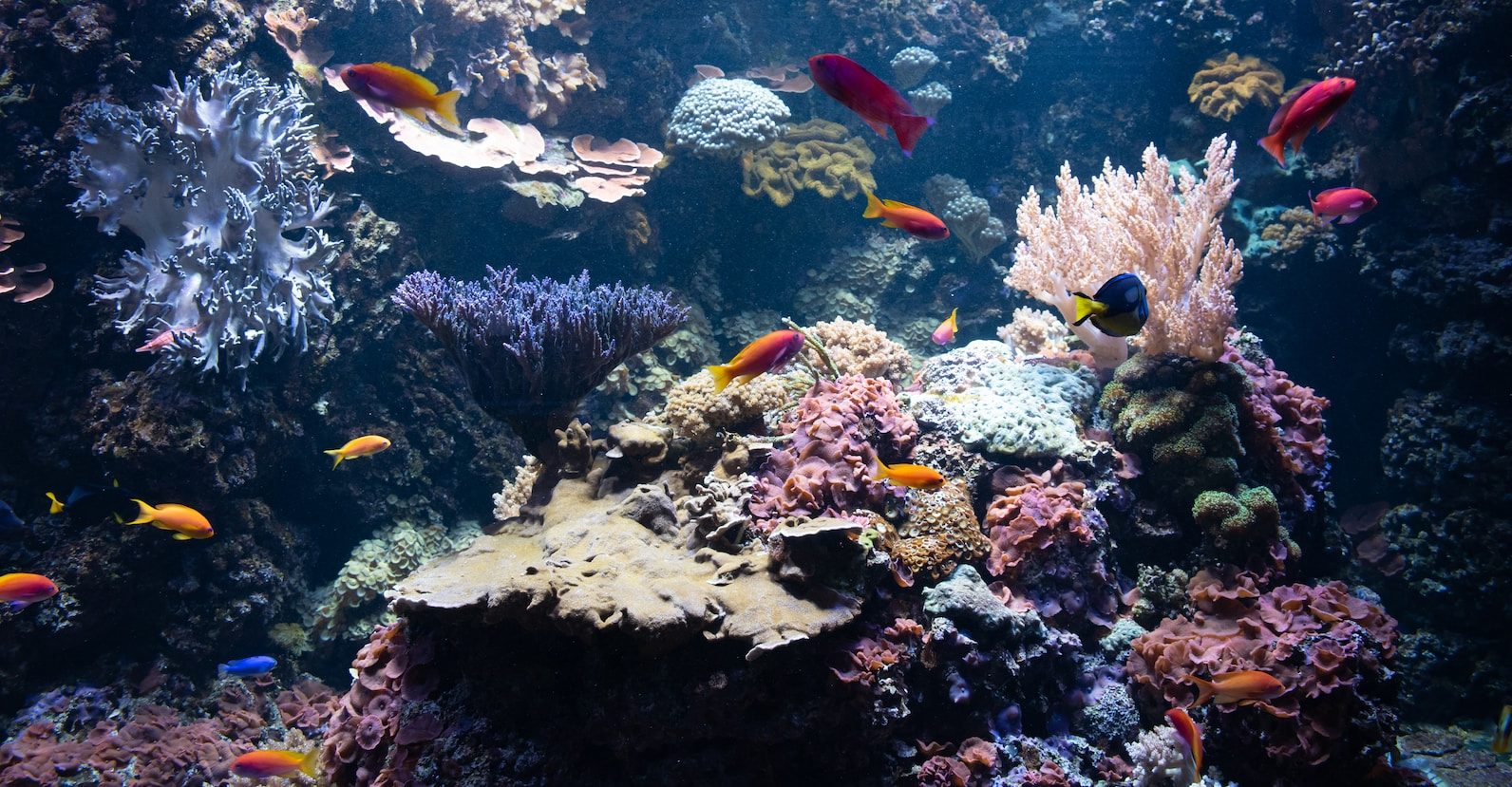Disclosure: Please note that some of the links on this site are affiliate links. If you click on these links and make a purchase, we may earn a small commission at no extra cost to you. Your support is greatly appreciated and helps us continue to provide valuable content. Thank you! (full disclosure)
Setting up an aquarium is a thrilling and rewarding endeavor. The kaleidoscope of colors and the graceful movements of aquatic inhabitants can offer countless hours of relaxation and awe. Nonetheless, before embarking on this aquatic adventure, it’s imperative to grasp one of the fundamental aspects of aquarium maintenance: the nitrogen cycle.
The nitrogen cycle is a natural process that takes place in all bodies of water, including aquariums. It serves as the bedrock for a healthy and stable aquatic environment. In this extensive guide, we will demystify the nitrogen cycle, delve into its intricacies, and elucidate how to initiate an aquarium that nurtures the well-being of your aquatic companions.
Unraveling the Nitrogen Cycle
At its core, the nitrogen cycle is a series of biological and chemical processes that transform toxic ammonia, stemming from fish waste and decomposing matter, into less harmful substances. The cycle comprises three primary stages:
1. Ammonia (NH3):
Fish excrete ammonia as waste, and it can also originate from uneaten food and decaying plants. Ammonia is exceedingly toxic to fish and can be lethal if left unregulated. This noxious compound marks the initiation of the nitrogen cycle.
2. Nitrite (NO2-):
Beneficial bacteria, specifically nitrosomonas, play a pivotal role in the nitrogen cycle by converting ammonia into nitrites. Although nitrites are still detrimental to fish, they are less toxic compared to ammonia. This stage represents a critical transition in the nitrogen cycle, as it signifies the conversion of an extremely toxic substance into a somewhat less harmful one.
3. Nitrate (NO3-):
Another group of beneficial bacteria, nitrobacter, take the baton by converting nitrites into nitrates. Nitrates are relatively less toxic to fish and can be mitigated through routine water changes. While nitrates are less harmful, elevated levels can still stress fish and impede their overall health.
Bacteria’s Vital Role in the Nitrogen Cycle
Bacteria assume a pivotal role in the nitrogen cycle as they are responsible for the conversion of ammonia and nitrite into less harmful nitrate. Here’s why bacteria are an indispensable component of this cycle within home aquariums:
- Ammonia and Nitrite Abatement: Ammonia and nitrite are highly perilous to fish, and their accumulation can swiftly lead to illnesses or fatalities. Beneficial bacteria act as natural biological filters, transforming these hazardous compounds into less dangerous nitrates, rendering the water safe for fish.
- Steady Water Quality: The presence of beneficial bacteria ensures that ammonia and nitrite levels remain at safe concentrations, bestowing upon your aquatic pets a stable and healthy environment. This prevents abrupt and perilous spikes in these toxic substances.
- Ecological Equilibrium: Beneficial bacteria are instrumental in fostering a balanced ecosystem within your aquarium. They facilitate a sustainable environment by decomposing organic waste and averting the buildup of detrimental chemicals.
Devoid of these bacteria, the nitrogen cycle would be disrupted, and ammonia and nitrite levels would remain perilously high, jeopardizing the health of your fish. Consequently, promoting the growth of beneficial bacteria in your aquarium is paramount to the well-being of your aquatic companions.
The Impact of Fertilizers on the Nitrogen Cycle in Home Aquariums
The nitrogen cycle is not limited to natural ecosystems; it is also a crucial process in the maintenance of home aquariums. Understanding how external factors, such as the use of fertilizers in planted aquariums, can influence the nitrogen cycle is essential for responsible aquarium management. Here’s how the use of fertilizers affects the nitrogen cycle in home aquariums:
1. Algae Growth and Nutrient Imbalance:
In planted aquariums, enthusiasts often add fertilizers to provide essential nutrients, including nitrogen, phosphorus, and potassium, to aquatic plants. While these nutrients are vital for plant growth, excessive or improper use of fertilizers can lead to nutrient imbalances and trigger the overgrowth of algae. Algae thrive in environments rich in nutrients, including nitrates, which are part of the nitrogen cycle. Elevated nitrate levels can result in unsightly and problematic algae blooms.
2. Impact on Water Parameters:
Excessive fertilizer dosing can alter the water parameters in an aquarium, including pH and hardness. These changes may not only stress fish but also affect the overall stability of the aquarium’s ecosystem. Inconsistent or uncontrolled parameters can lead to health issues for both fish and plants.
3. Regular Monitoring and Adjustments:
To ensure a balanced and healthy nitrogen cycle in planted aquariums with fertilizers, it is essential to monitor nitrate levels regularly. Regular water testing will help aquarium owners detect and address any spikes in nitrate concentrations. Additionally, adjusting the fertilizer dosing regimen based on plant growth and nutrient uptake can help prevent excess nitrates and maintain a harmonious aquarium environment.
4. Beneficial Bacteria Adaptation:
In aquariums with plants and a nitrogen cycle, beneficial bacteria play a crucial role in converting ammonia and nitrite into nitrate, just as in non-planted aquariums. However, the presence of live plants can influence the nitrogen cycle by absorbing nitrates as a nutrient source. Consequently, the balance between nutrient uptake by plants and nutrient production by the nitrogen cycle bacteria must be carefully managed to avoid nutrient deficiencies or excesses.
The Role of Water Test Kits and the Nitrogen Cycle
Water test kits are invaluable tools in the arsenal of aquarium enthusiasts, aiding in the proper management of the nitrogen cycle and the overall health of aquatic life. Here’s when and how to use water test kits effectively:
1. During Aquarium Cycling:
When setting up a new aquarium or during major changes in an existing one, it is crucial to test the water regularly, especially for ammonia and nitrite levels. This is essential during the initial cycling process when beneficial bacteria are establishing themselves. Testing every few days or weekly will help monitor the progress of the nitrogen cycle. Once ammonia and nitrite levels start to drop and nitrate levels rise, it indicates that the cycle is maturing.
2. Routine Maintenance:
Even after the initial cycling is complete and your aquarium is well-established, it’s essential to continue regular water testing. This practice helps you detect any spikes or fluctuations in ammonia, nitrite, and nitrate levels before they become harmful to your fish. Aim to test your aquarium water every 1-2 weeks as part of your routine maintenance.
3. When Troubleshooting Issues:
Water test kits are invaluable when troubleshooting problems in your aquarium. If you notice unusual behavior in your fish, declining plant health, or any signs of stress, testing the water parameters can provide critical insights. It helps you identify and address any water quality issues promptly.
4. When Introducing New Fish or Plants:
Before introducing new fish or plants into your aquarium, it’s advisable to test the water to ensure it meets the ideal conditions for your aquatic inhabitants. This prevents shock and stress to the new additions and helps maintain a stable environment for all aquarium residents.
In conclusion, the nitrogen cycle is an indispensable process for maintaining the health of home aquariums, whether they are planted or non-planted. Beneficial bacteria play a vital role in ensuring the safe conversion of ammonia and nitrite into nitrate. Moreover, in planted aquariums, the use of fertilizers can impact the nitrogen cycle by influencing nutrient
Amazon and the Amazon logo are trademarks of Amazon.com, Inc, or its affiliates.

